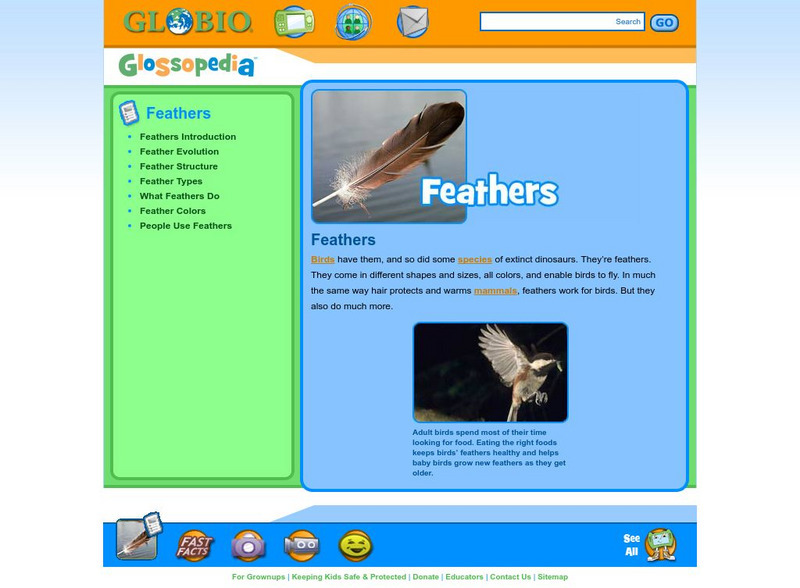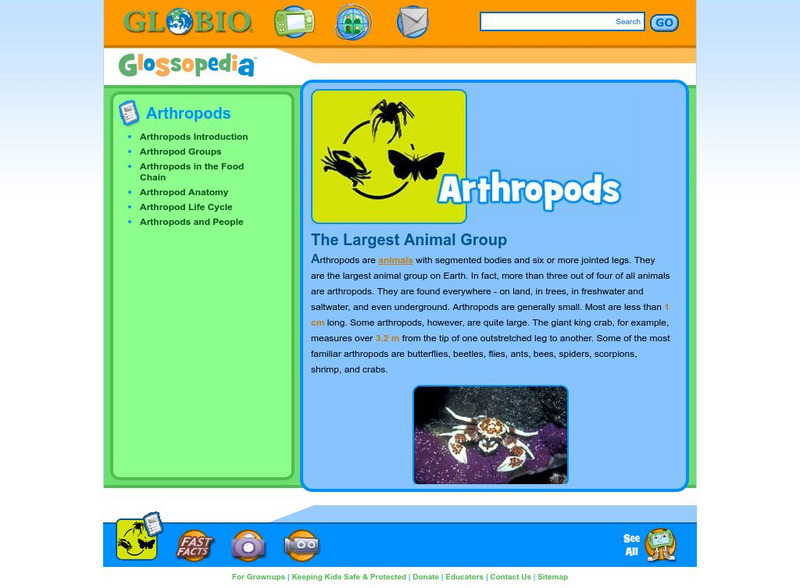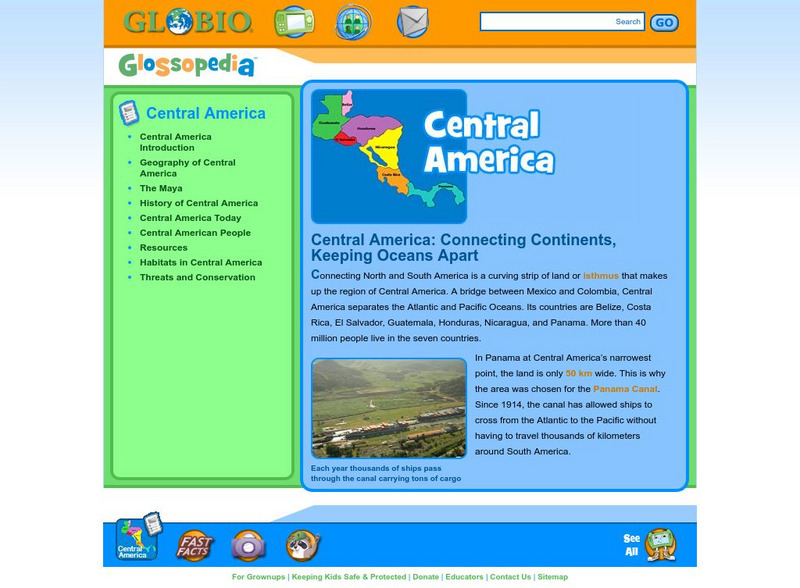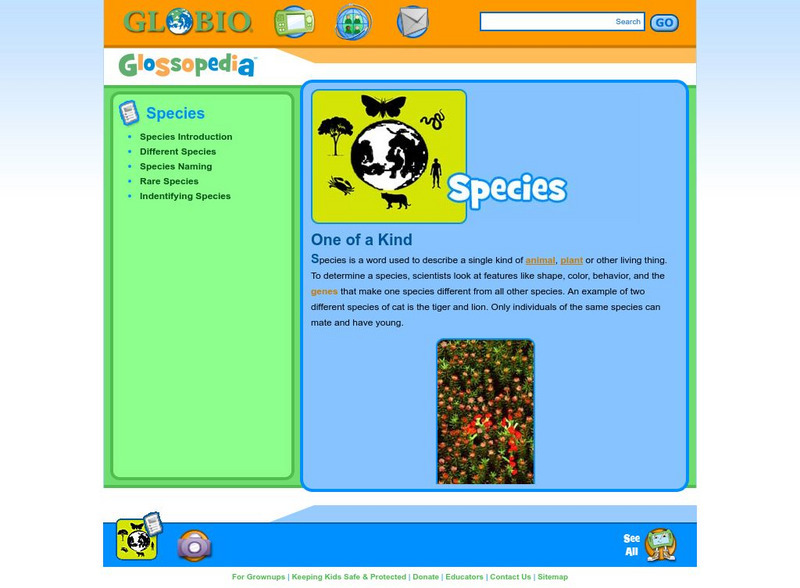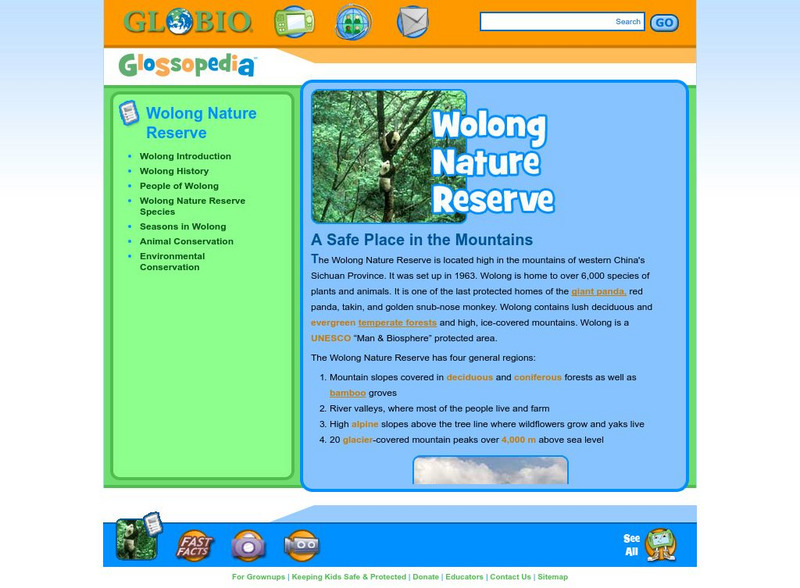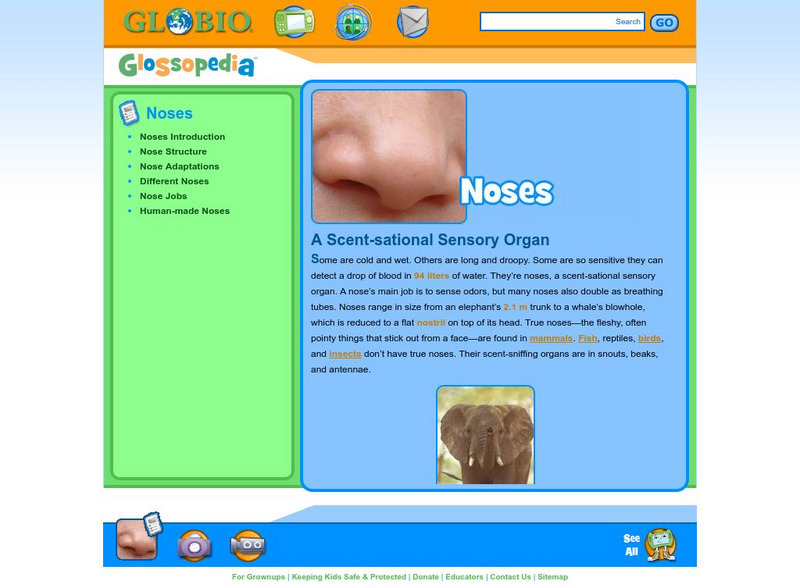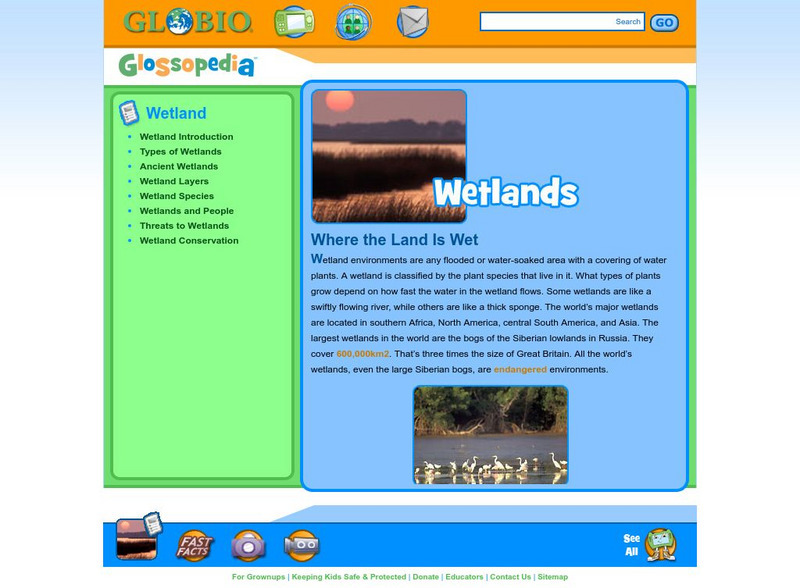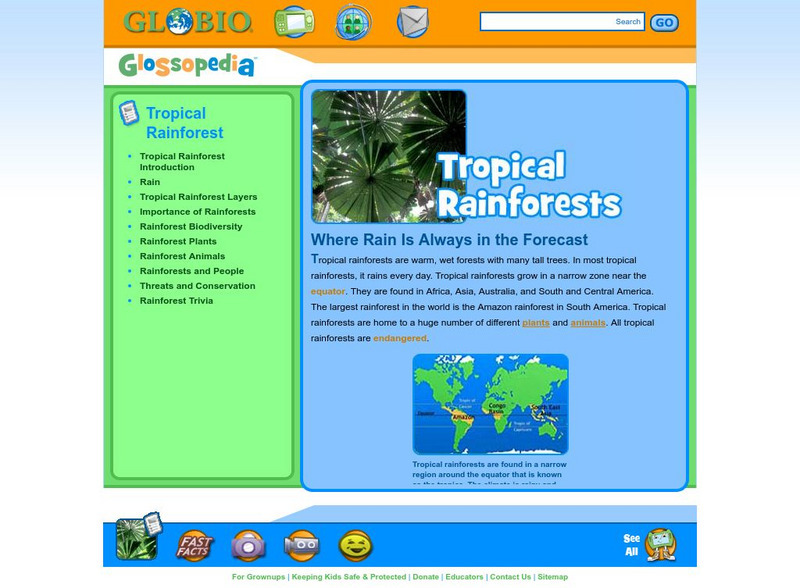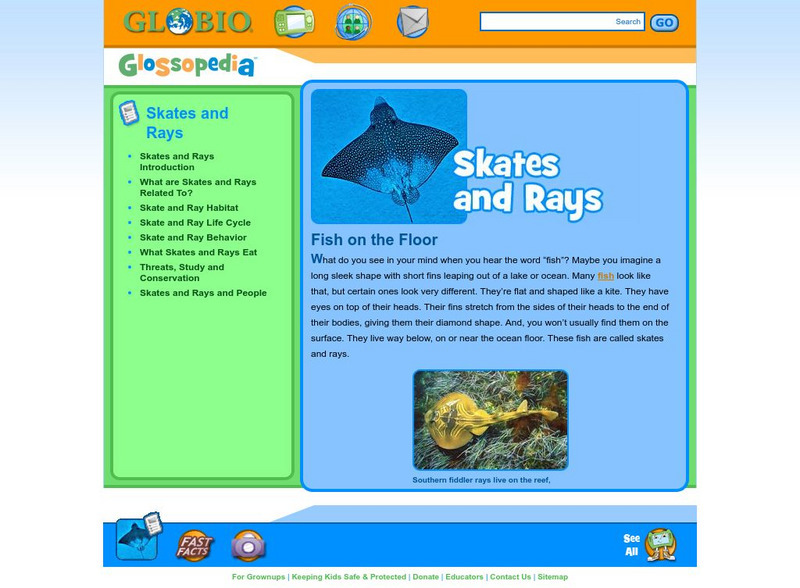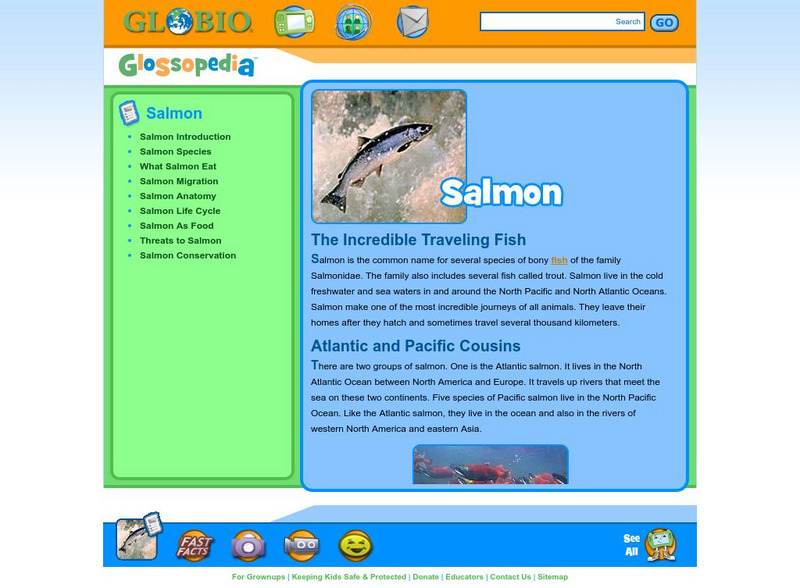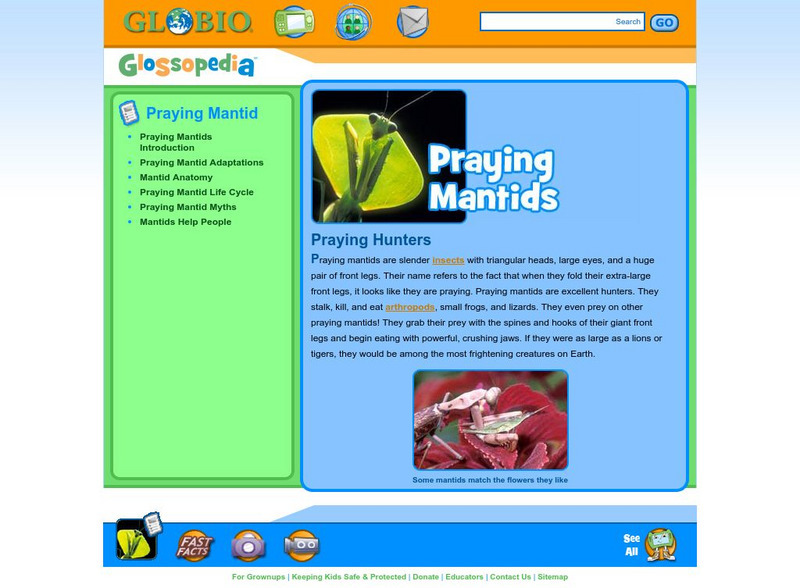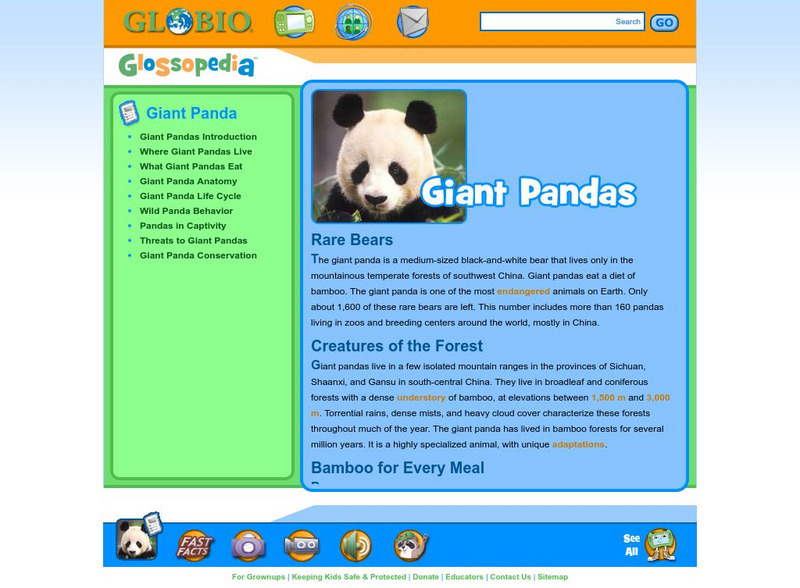Globio
Glossopedia: Light
Light is a form of energy. We see it in many different forms all around us. It's the sunlight that pours through your bedroom window and wakes you up. Images and in-depth information on light can all be accessed in this article.
Globio
Glossopedia: Feathers
Birds have them, and so did some species of extinct dinosaurs. They're feathers. They come in different shapes and sizes, all colors, and they enable birds to fly. Lots of information can be found in this article.
Globio
Glossopedia: Rhinoceros
Rhinoceroses, or rhinos, are big and ancient-looking and can be dangerous. They can also be shy and are seldom seen. Once there were hundreds of rhino species, but today there are only a few. This article provides an in-depth look at...
Globio
Glossopedia: Arthropods
Arthropods are animals with segmented bodies and six or more legs. They are found throughout the world in every environment. This article presents a good deal of quality information.
Globio
Glossopedia: Central America
Connecting North and South America is a curving strip of land or isthmus that makes up the region of Central America. A bridge between Mexico and Colombia, Central America separates the Atlantic and Pacific Oceans. Learn about this...
Globio
Glossopedia: Species
A species is defined as a single kind of animal, plant or creature. Examples of different species are given and how the many species that exist relate to biodiversity. Scientific naming conventions are introduced.
Globio
Glossopedia: Wolong Nature Reserve
Wolong Nature Reserve is a place of great biodiversity and varied environments located in Western China. The reserve's history is described. Various human ethnic and cultural groups are explored as well as the extensive giant and red...
Globio
Glossopedia: Animals
The animal kingdom and its classification are explained and broken down into vertebrates and invertebrates in this resource. "Best-of" the animal kingdom list given - fastest, smallest, largest, strongest and more.
Globio
Glossopedia: Noses
Some are cold and wet. Others are long and droopy. Some are so sensitive they can detect a drop of blood in 94 liters of water. They're noses, a scent-sational sensory organ.
Globio
Glossopedia: Primates
Primates are a group of mammals that include apes, humans, monkeys, and prosimians. Primate characteristics and anatomy are explored, as well as life cycles, behavior and diet. Human impacts on other primate species have been...
Globio
Glossopedia: Wetland
Wetlands are an integral piece of Earth's ecology. Wetland structure is described as well as their role in the health of plants and animals. Issues concerning destruction and preservation efforts also discussed.
Globio
Glossopedia: Tropical Rainforests
Tropical rainforests are found along the Earth's equator. They possess a very special climate and are an integral part of the planet's natural system. Climate, plant and animal life, and indigenous peoples are discussed. Additionally,...
Globio
Glossopedia: Temperate Forest
Temperate forests cover much of the Earth. Temperate forest ecology is described as well as the importance to all animal and plant health. Human impact on temperate forests around the world is discussed.
Globio
Glossopedia: Stars
Many of the objects you can see in the night sky are stars, large objects in space that produce light. Our galaxy, the Milky Way, contains more than 100 billion stars. Stars are so far away that their light does not reach us for years....
Globio
Glossopedia: Solar System
Planet Earth is part of a vast space neighborhood called the solar system. Our solar system is an amazing place. It's even more amazing that many other solar systems have been discovered. This article examines the solar system.
Globio
Glossopedia: Skates and Rays
There are more than five hundred different species of skates and rays in our oceans. Scientists say that these fish are closely related to sharks, sharing a common ancestor from around 400 million years ago. This article provides an...
Globio
Glossopedia: Seals
Seals are mammals that live parts of their lives on land and other parts entirely in the water. They breed and care for their babies on land, but spend most of their lives in the ocean. This article provides an in-depth look at these...
Globio
Glossopedia: Salmon
This article introduces various species of salmon, breaking them into two groups - Pacific and Atlantic Salmon. Salmon habitat and life cycle are described. Concepts of spawning and food chain are explored. The issues of human activities...
Globio
Glossopedia: Rockhopper Penguins
Rockhopper penguins live in steep, rocky places. The only way they can get around on land is to hop from rock to rock. Rockhoppers grow about 46 cm tall - almost as high as an adult's knee. They are the smallest of the crested penguins....
Globio
Glossopedia: Praying Mantid
Praying Mantids are excellent hunting insects found throughout the world. Various species of mantids, their life cycle, hunting habits, and habitat are described.
Globio
Glossopedia: Lions
Lions are big cats that are related to tigers, leopards, and jaguars. The number of lions is decreasing and lions are losing habitat. A long time ago, someone crowned lions as "the kings of the jungle." But lions don't live in jungles....
Globio
Glossopedia: Giant Panda
Giant Pandas only live in the mountains of southwest China. This article focuses on Giant Panda habitat, diet, life cycle and reproduction. Extensive information is given on panda babies and the contrast between life in the wild and life...
Globio
Glossopedia: Fishes
Learn about fish from around the world. Varying species, their biology, role in the environment, human cultural significance, as well conservation issues.
Globio
Glossopedia: Environments
This article defines "environment" as a collection of animals and plants in a specific landscape and climate. The concept of differing types of environments is introduced. The impact of humans on environments and all environments'...



